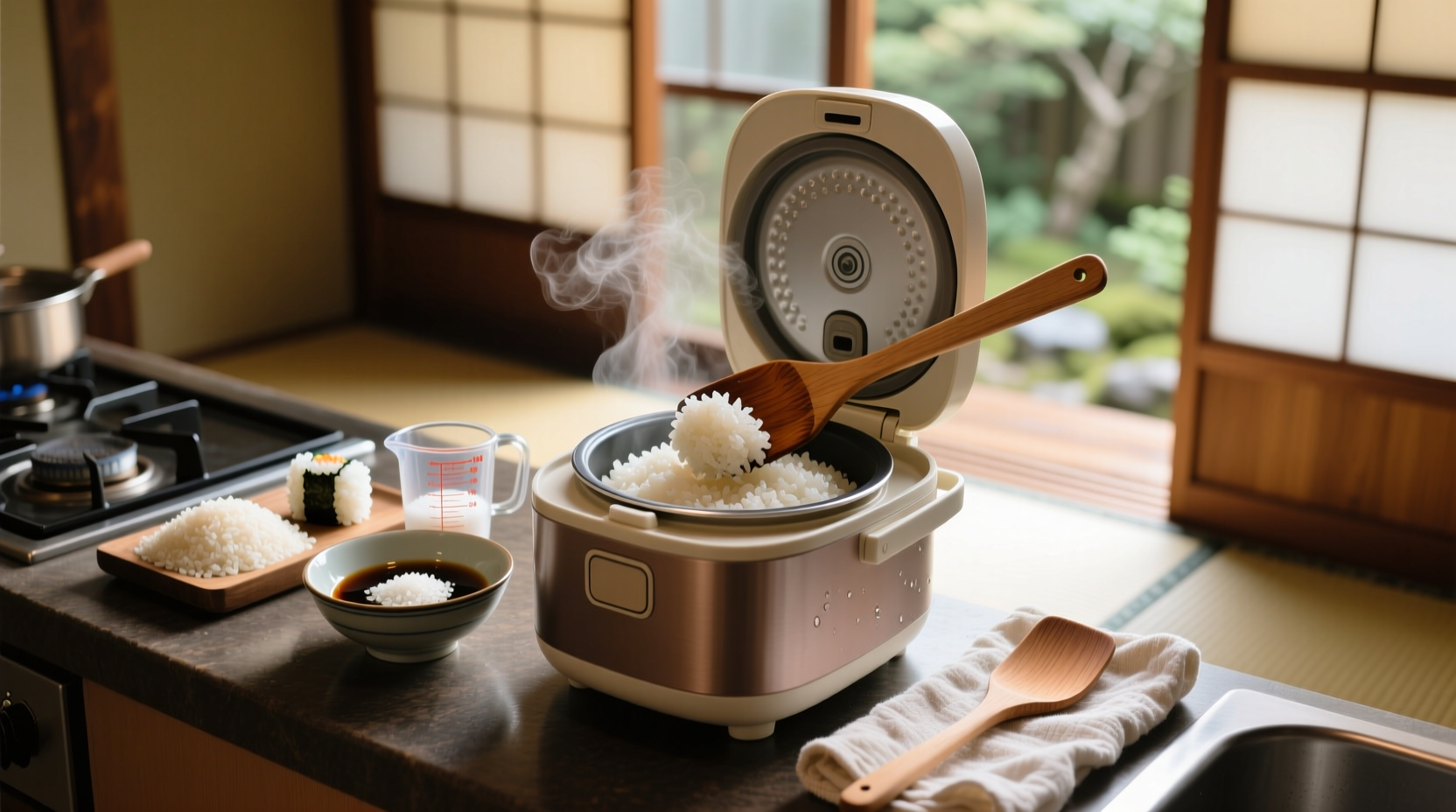Getting sushi rice right separates amateur attempts from authentic Japanese sushi experiences. Unlike regular rice, sushi rice demands specific preparation techniques that affect texture, flavor, and how well it holds together when rolled. This guide delivers the exact methods used by professional sushi chefs, tested through years of practice in Tokyo's top sushi restaurants.
The Critical Foundation: Why Sushi Rice Makes or Breaks Your Dish
Sushi rice isn't just a component—it's the structural and flavor foundation of your entire creation. When prepared correctly, it should be slightly sticky yet maintain individual grain integrity, with a subtle tang that complements fish without overpowering it. The Japanese culinary tradition considers rice preparation so vital that sushi apprentices spend months mastering this single element before touching fish.
According to the Japanese Ministry of Agriculture, Forestry and Fisheries, proper rice preparation accounts for 70% of sushi quality perception. Many home cooks fail by using the wrong rice variety, skipping essential washing steps, or applying vinegar to rice that's too hot—common mistakes that transform potential masterpiece into disappointing mush.
| Rice Variety | Grain Length | Starch Content | Suitability for Sushi |
|---|---|---|---|
| Koshihikari | Short | High amylopectin | ★★★★★ (Premium choice) |
| Akitakomachi | Short | High amylopectin | ★★★★☆ |
| Calrose | Medium | Moderate | ★★★☆☆ (Acceptable substitute) |
| Basmati | Long | High amylose | ★☆☆☆☆ (Not suitable) |
Essential Equipment Checklist
While you don't need specialized equipment, certain tools significantly improve results:
- Hangiri (wooden sushi tub) - allows proper moisture evaporation
- Shamoji (rice paddle) - prevents grain crushing
- Fine mesh strainer - for thorough washing
- Thermometer - critical for vinegar application
- Cotton cloth - for covering rice during resting
Don't have traditional tools? A wide glass or ceramic bowl works for mixing, and a silicone spatula can substitute for a shamoji with careful handling.

Step-by-Step Sushi Rice Preparation Process
1. Rice Selection and Washing (The Most Critical Step)
Start with 2 cups (400g) of premium short-grain Japanese rice. Place rice in a large bowl and cover with cold water. Gently swish rice with fingertips—never rub grains together. Drain immediately and repeat until water runs almost clear (typically 4-5 washes). This removes excess surface starch that causes gumminess.
Professional tip: The final wash water should resemble skim milk in opacity, not clear like drinking water. Complete washing within 15 minutes to prevent water absorption before cooking.
2. Soaking and Cooking
After washing, let rice drain for 15 minutes. Add 10% more water by volume than rice (e.g., 2 cups rice + 2.2 cups water). Soak for 30 minutes in summer or 60 minutes in winter—this critical step ensures even water absorption.
Cook using one of these methods:
- Rice cooker: Use standard setting, then let rest 10 minutes after cooking completes
- Stovetop: Bring to boil, reduce to lowest heat for 15 minutes, then rest 10 minutes off heat with lid on
3. Vinegar Mixture Preparation
While rice cooks, prepare seasoning with these exact proportions:
- 50ml rice vinegar
- 50g sugar
- 10g salt
Warm mixture gently (do not boil) until sugar dissolves completely. Cool to body temperature (98.6°F/37°C)—this precise temperature prevents rice from becoming mushy when mixed.
4. Mixing and Cooling
Transfer hot rice to hangiri or wide bowl. Pour vinegar mixture over rice. Using a slicing motion with your paddle, gently fold rice while fanning it vigorously. This cools rice rapidly while distributing seasoning evenly without crushing grains.
Cool to room temperature within 20 minutes—this timing is crucial for proper texture development. Cover with damp cloth until ready to use, but never refrigerate as this hardens the rice.
Troubleshooting Common Sushi Rice Problems
Even experienced cooks encounter issues. Here's how to fix them:
- Too sticky: Over-washing or incorrect rice variety. Next time, reduce washes by one cycle.
- Too dry: Insufficient vinegar mixture or over-fanning. Add 1 tsp vinegar mixture per cup of rice.
- Hard centers: Inadequate soaking time. Extend soaking by 15 minutes next batch.
- Sour taste: Vinegar applied to too-hot rice. Let rice cool 5 minutes before mixing.
Professional Chef Secrets for Perfect Results
Based on observations in Tokyo's Michelin-starred sushi establishments, these advanced techniques elevate your results:
- Seasonal adjustments: In summer's humidity, reduce water by 5% and increase vinegar mixture by 5%
- Rice temperature: Always bring rice to room temperature before making nigiri—cold rice won't accept fish properly
- Hand temperature: Wet hands with vinegar water (not plain water) when shaping to prevent sticking without diluting flavor
- Freshness window: Best texture occurs 30-60 minutes after preparation—never use immediately after mixing
Remember that humidity dramatically affects results. The Japanese Agricultural Standards organization notes that rice absorbs 2-3% more moisture in 80% humidity compared to 50% humidity. In humid conditions, reduce soaking time by 10-15 minutes and use slightly less water during cooking.











 浙公网安备
33010002000092号
浙公网安备
33010002000092号 浙B2-20120091-4
浙B2-20120091-4